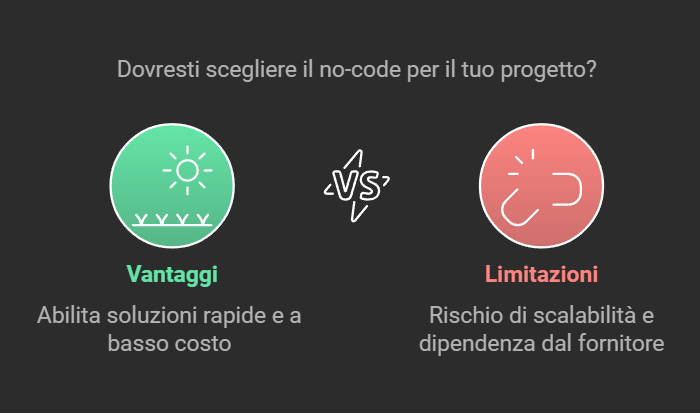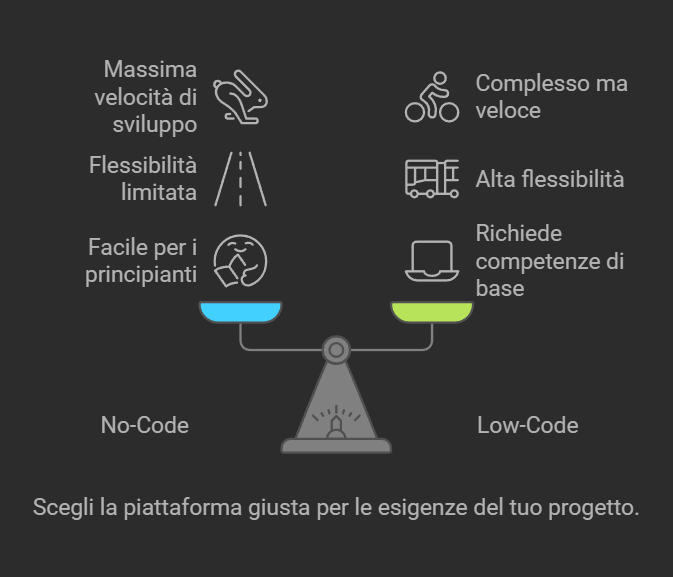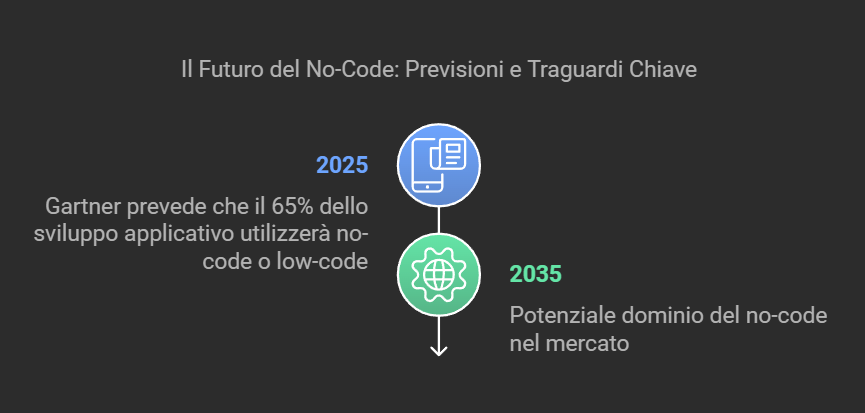The No-Code is not a sudden revolution, but a natural evolution of the technological world. For more than two decades, tools such as Excel and WordPress have shown that simplifying development does not mean compromising its effectiveness.
Despite its usefulness, the no-code is not for everyone. It will not replace the skills of an experienced developer, but for those with projects to implement-entrepreneurs, companies, the curious-it is a powerful and accessible resource.
The Roots of No-Code: From Spreadsheets to Drag-and-Drop
A bit of history
No-code has its roots in the 1990s, with tools such as:
- Microsoft Excel: allowed to handle data without writing code.
- WordPress (2003): democratized website creation.
Today, platforms such as Bubble, Webflow o Airtable have taken this simplicity to new levels, enabling the creation of applications, automations, and websites without advanced technical skills.
The secret of no-code: the "what," not the "how"
L'declarative approach of no-code allows you to focus on what you want to achieve, without worrying about the technical process. It's like driving a car: you don't need to know how the engine works, but you care about getting to your destination.
Why No-Code Is the Present (And the Future)
Key benefits
No-code offers obvious benefits:
- Accessibility: Anyone can create digital solutions, even without a technical background.
- Speed: Goes from idea to prototype in hours, not months.
- Cost reduction: Eliminates (in part) the need for developers.
When to use it
- Projects with limited budgets: Perfect for those who need quick and low-cost solutions.
- Quick tests: Ideal for creating MVPs or prototypes and validating ideas.
Beware of compromises
Not everything is possible with no-code. You are limited by what the platform allows. For example:
- Lack of flexibility.
- Scalability not always guaranteed.
- Dependence on platform limitations.
Not Everything Is Gold: The Limits of No-Code
The main obstacles
- Scalability and flexibility: Platforms cannot always handle complex projects.
- Vendor lock-in: If the platform fails, you risk losing everything.
- Integrations: Not all platforms support open standards to easily migrate projects.
How to deal with them
- Choose platforms with options of standardized export.
- Integrate solutions custom When necessary.
- Use no-code as a complementary tool, not as the only resource.

No-Code or Low-Code? Two Ways, Same Goal
Main differences
| Feature | No-Code | Low-Code |
|---|---|---|
| Ease of use | For beginners | For users with basic skills |
| Flexibility | Limited | High |
| Speed of development | Maximum | High, but more complex |
When to choose one or the other
- No-Code: Simple projects, prototypes, quick tests.
- Low-Code: Complex or long-term solutions that require customization.

What Can You Create with No-Code?
Practical examples
With no-code you can:
- Business automation: Use tools such as n8n, Make o Zapier To simplify processes.
- E-commerce: Launches online stores with WordPress e Woocommerce
- Prototypes and MVPs: Test ideas with Plasmic or Bubble.
- CRM and Custom Systems: Monitor and manage relationships with customized tools.
Practical advice
When you encounter frustrating limitations or bugs, consider a combination of no-code e low-code to gain more control without losing the benefits of speed.
The Citizen Developer: A New Figure in Evolution.
Who is the citizen developer?
He is a non-technical professional who uses no-code platforms to create custom tools. However:
- Not all are suitable: It takes curiosity and willingness to learn.
- Does not replace a developer: Even with no-code, good programming logic is essential.
A corporate change
No-code is democratizing development, but it is not yet an established reality. For now, it is a complementary tool that improves collaboration among teams.
A Look into the Future: Reality or Science Fiction?
The forecast
Gartner predicts that by the 2025, the 65% of application development will use no-code or low-code. Personally, I think it is too early. Maybe in 2035 We will see no-code dominate the market.
The role of artificial intelligence
L'IA is the real engine of no-code. Without it, we would not have such advanced tools. In the future, AI could make it possible to create applications without even opening an editor.
Complementary tool, not substitute
No-code will not eliminate traditional developers. Rather, it will transform their role, making them more strategic and focused on problem-solving.

Where to start?
Recommended platforms
- Plasmic: For the freedom to combine no-code and low-code.
- n8n: Perfect for flexible and powerful automations.
Overcoming psychological barriers
The biggest challenge is not technological, but mental. Many purist programmers see no-code as a threat, forgetting that the result matters more than the process.
A call to action
Don't wait for the future to come: starts today. With no-code, you have the tools to turn your ideas into reality, and simplifying your company's processes is just a click away.
Need business tools or want to develop an idea contact me and let's talk!

Looking for a web designer expert for the realization of websites professional?
My name is Edoardo Guzzi and for more than 10 years I have been helping companies and startups develop high-performing, SEO-optimized websites designed to convert.
I deal with website development on WordPress and Odoo, e-commerce creation, UX/UI optimization and strategies to improve online visibility.
I operate between Switzerland and Italy, offering tailored solutions for those who want to stand out on the web. Find out more about aifb.ch, webwakeup.com.
